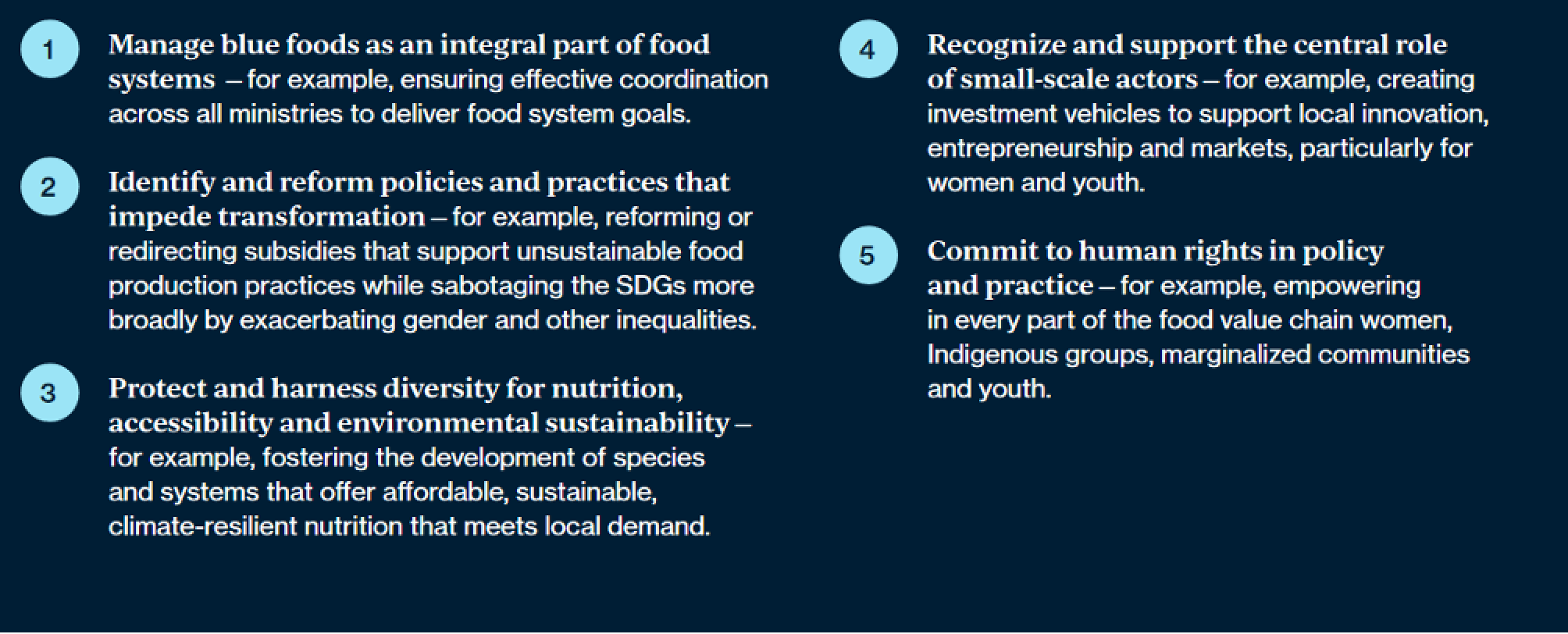Blue foods include thousands of species of aquatic plants and animals, many of them rich in protein and micronutrients. This vast diversity offers enormous potential. Sustainably harvested blue foods can help achieve the SDGs by alleviating hunger and malnutrition; improving health; reducing pressure on oceans, water, land and climate; and maintaining or creating decent livelihoods for hundreds of millions of people worldwide. The report highlights the following benefits of blue foods:
- Blue foods provide much more than protein;
- Blue foods have lower environmental footprints than land-based foods;
- Blue food systems are a cornerstone of many rural and national economies
For both marine and freshwater systems, several challenges need to be addressed to realize the potential of blue foods:
- Blue foods need effective governance;
- Blue foods need healthy ecosystems;
- Blue foods are interconnected with the rest of the food system, but policies and practices are siloed;
- Blue food systems are often beset by inequities.
Food system transformation will require different paths in different contexts, but all governments and other food system actors should engage in the following actions:


Login (or register) to follow this conversation, and get a Public Profile to add a comment (see Help).
20 Sep 2021
Key resources
Key publications on agricultural biomass
Strengthening economic resilience and social safety nets for sustainable development in Mauritania
Share this page